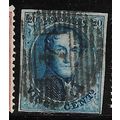Much Wenlock - Holy Trinity Church 1950s RP Valentine
- Condition : Used
- Dispatch : 2 Days
- Brand : None
- ID# : 41063570
- Quantity : 1 item
- Views : 714
- Location : United Kingdom

- Seller : justthebook (+1713)
- Barcode : None
- Start : Tue 05 Apr 2011 05:22:10 (EDT)
- Close : Run Until Sold
- Remain : Run Until Sold
Checks/Cheques
 for 1 item(s) edit
for 1 item(s) edit
Shipping Calculator
More Listings from This Seller view all
Seller's Description
- Postcard
- Picture / Image: Holy Trinity Church, Much Wenlock, Shropshire - real photo type
- Publisher: Valentine's
- Postally used: no
- Stamp: n/a
- Postmark(s): n/a
- Sent to: n/a
- Notes & Key words:
------------------------------------------------
Postage & Packing:
UK (incl. IOM, CI & BFPO): 99p
Europe: £1.60
Rest of world (inc. USA etc): £2.75
No additional charges for more than one postcard. You can buy as many postcards from me as you like and you will just pay the fee above once. (If buying postcards with other things such as books, please contact or wait for invoice before paying).
Payment Methods:
UK - PayPal, Cheque (from UK bank) or postal order
Outside UK: PayPal or Google Chckout ONLY please. NO non-UK currency checks or money orders (sorry).
NOTE: All postcards are sent in brand new stiffened envelopes which I have bought for the task. These are specially made to protect postcards and you may be able to re-use them. In addition there are other costs to sending so the above charge is not just for the stamp!
----------------------------------------------
Text from the free encyclopedia WIKIPEDIA may appear below to give a little background information:
*************
Much Wenlock, earlier known simply as "Wenlock" ("White Place") in Celtic ("Gwyn-loc"), is a small town in central Shropshire, England. It is situated on the A458 road between Shrewsbury and Bridgnorth. Nearby, to the northeast, is the Ironbridge Gorge. The population of the town's parish, according to the 2001 census, is 2605.
The "Much" was added to the name to distinguish it from the nearby Little Wenlock.
The town grew around an abbey or monastery founded around 680 [1] by Merewalh, a son of King Penda of Mercia. King Penda installed his daughter Milburga as Abbess in 687. Milburga of Wenlock was credited with many miraculous works [2]. The abbey flourished until around 874 when a Danish Viking attack occurred. In the 11th Century another religious house was built on the same site by Leofric, Earl of Mercia and Countess Godiva his wife. In the twelfth century this was replaced by a Cluniac priory, established by Roger de Montgomerie after the Norman Conquest, the ruins of which can still be seen and which is now in the hands of English Heritage. It prospered until the Dissolution of the Monasteries in 1539.
Other architectural attractions include the sixteenth century Guildhall, many other historic buildings in the Early English style and an annual well dressing at St Milburga's Well on Barrow Street.The town was incorporated under the name of "Bailiff, Burgesses and Commonalty" by Edward IV in 1468 at the request of Sir John Wenlock, and "in consideration of the laudable services which the men of the town performed in assisting the king to gain possession of the crown," and the charter was confirmed in 1547[citation needed] by Henry VIII and in 1631[citation needed] by Charles I.[1]
The town is known for Wenlock Olympian Games set up by Dr. William Penny Brookes in 1850. In 1861 he was also instrumental in setting up the Shropshire Games and later in 1866, the National Olympian Games. Dr. Brookes is credited as a founding father of the Modern Olympic Games, and meetings between William Penny Brookes and Baron Pierre de Coubertain took place at The Raven Hotel (as did the feast which concluded each year’s Olympian Games), and today in The Raven Hotel there are displayed many artefacts from those early years, including original letters from Baron Pierre de Coubertain to William Penny Brookes. The town's secondary school is named after William Penny Brookes. The Wenlock Olympian Games, a four-day event during the second weekend in July, are still contested in the town annually.
A Borough of Wenlock existed until 1966 which, at its height, was the largest borough in England outside of London and encompassed several of the towns that now constitute Telford. The Borough had unusual boundaries, covering Much Wenlock itself, but also Little Wenlock, Broseley and Ironbridge. 1966 saw the core Wenlock parts become part of the Bridgnorth Rural District, with other parts also going to Dawley urban district and to Wellington Rural District.
Listing Information
| Listing Type | Gallery Listing |
| Listing ID# | 41063570 |
| Start Time | Tue 05 Apr 2011 05:22:10 (EDT) |
| Close Time | Run Until Sold |
| Starting Bid | Fixed Price (no bidding) |
| Item Condition | Used |
| Bids | 0 |
| Views | 714 |
| Dispatch Time | 2 Days |
| Quantity | 1 |
| Location | United Kingdom |
| Auto Extend | No |




















